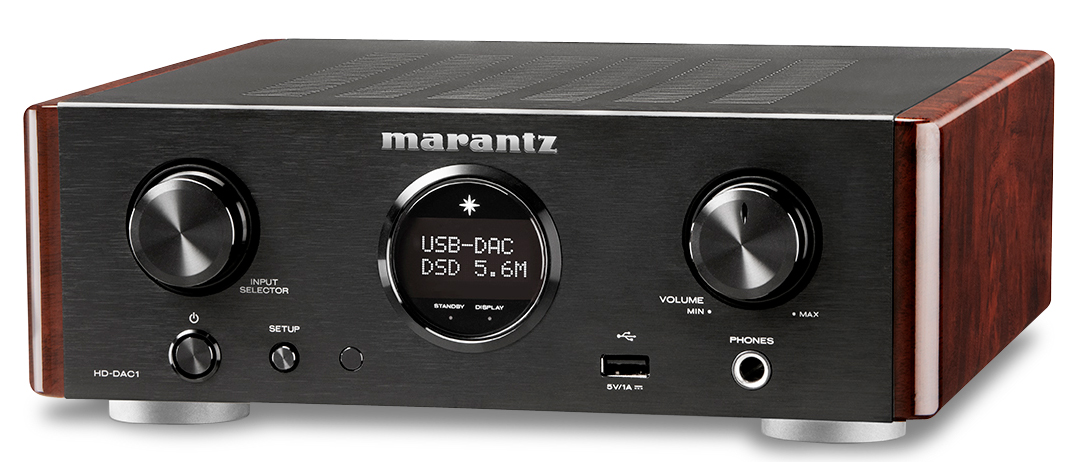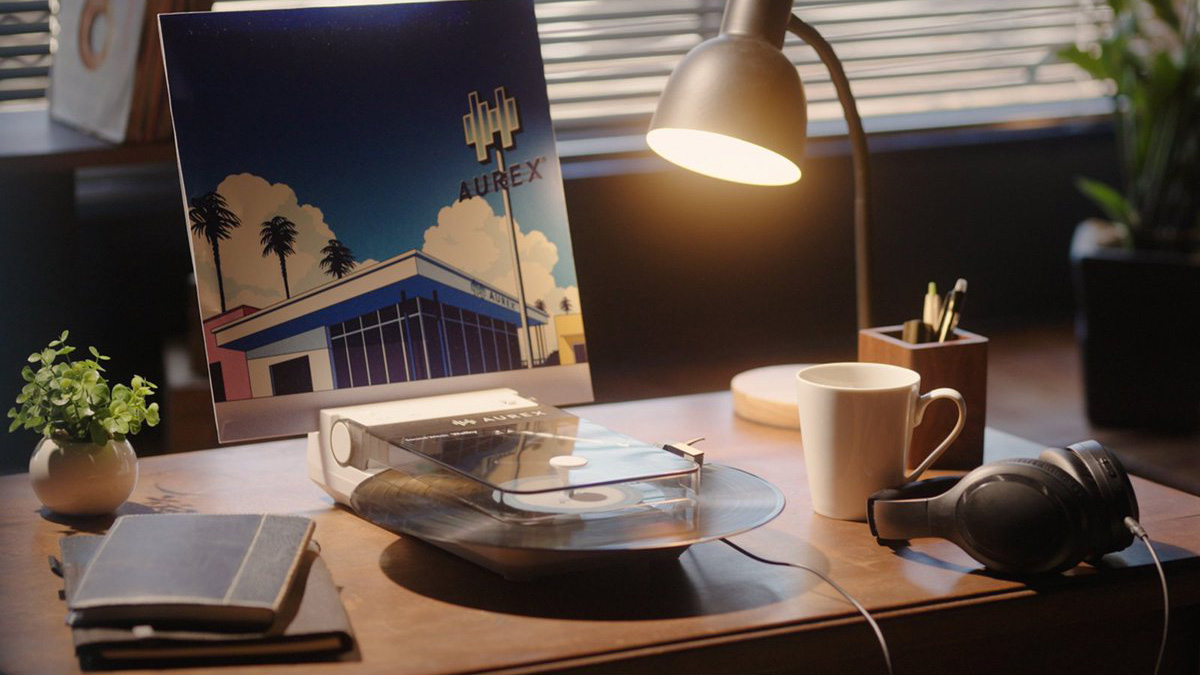What Hi-Fi? Verdict
For those that listen to everyday digital music through consumer-grade headphones, the HD-DAC1 is a practical treat that's affordable, sounds great and looks the part too.
Pros
- +
Magnificent headphone amp
- +
Solid, reliable digital performance
- +
Attractive design
Cons
- -
384kHz PCM/DSD256 not supported
- -
No balanced headphone output
- -
So-so remote
Why you can trust What Hi-Fi?
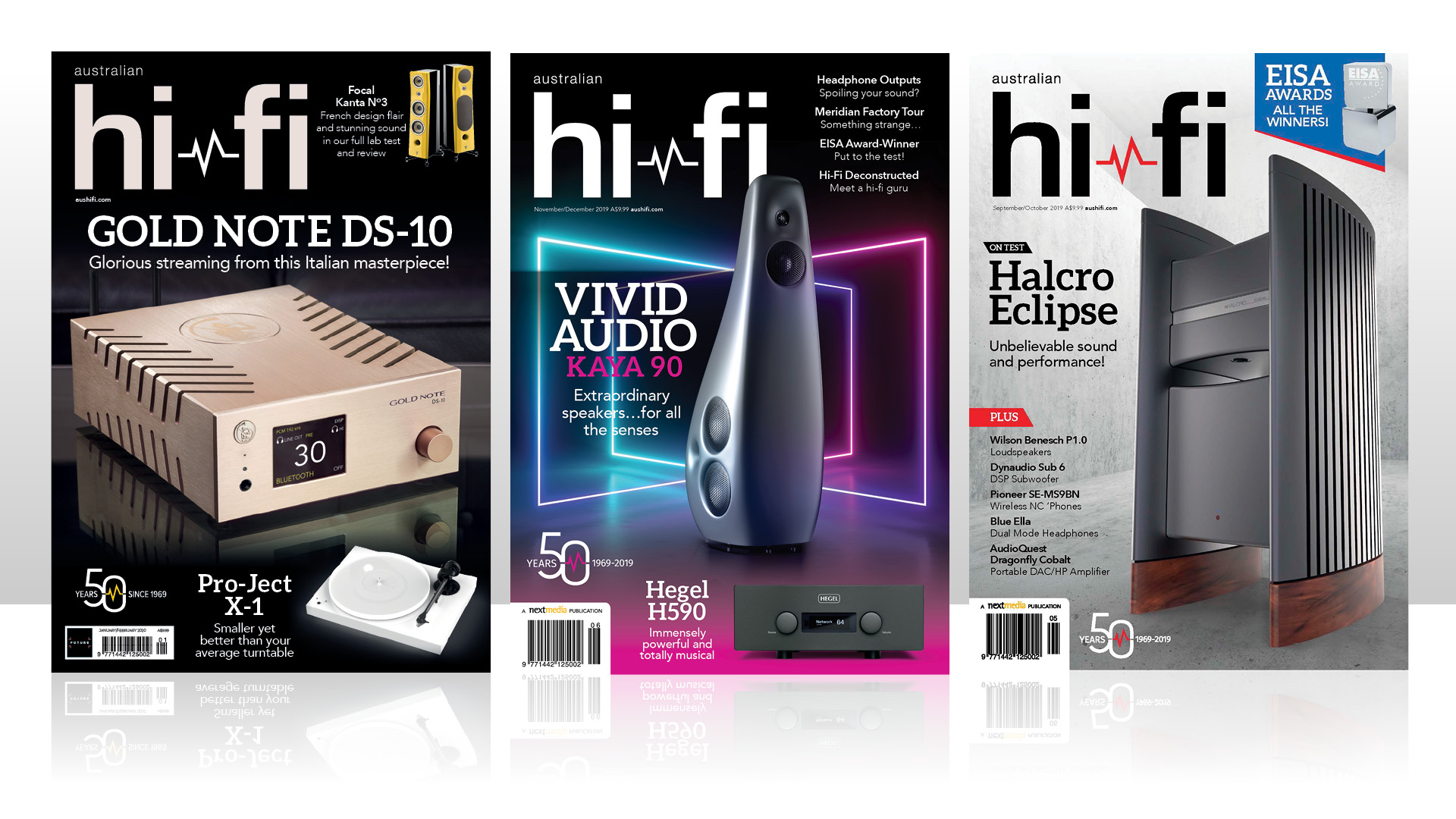
This review and test originally appeared in Australian Hi-Fi magazine, one of What Hi-Fi?’s sister titles from Down Under. Click here for more information about Australian Hi-Fi, including links to buy individual digital editions and details on how to subscribe.
The Marantz HD-DAC1 headphone amplifier and DAC is one of Marantz’s premium models, in the popular, smaller ‘HD’ form factor case, that makes it perfect for bedside or desktop use, or for someone who wants a stylish unit on display in a living room.
It’s certainly a stylish unit, in either its black or silver finish, both of which are trimmed with highly polished real wood side panels. But how does it perform? That’s what we were keen to discover.
But, first, before we get to that, let’s look the capabilities the HD-DAC1 has on offer and the functions it will, and won’t perform.
Features
As its model name suggests, there are two main functions. As a DAC the Marantz HD-DAC1 can decode PCM fed via its two optical or single coaxial digital audio inputs. Sample rates from 32kHz to 192kHz are supported, along with bit depths of 16 and 24.
It can also act as a DAC for a computer – it’s a USB Audio Class 2.0 device. In that mode it supports the same PCM but also DSD in both regular and double-speed forms.
It also has a 3.5mm analogue input which you can use with, for example, the headphone output on a digital audio player. On the front is a flat-type USB connection. You can plug a USB memory stick into that and play (some) of the music thereon. Or you can plug your iPod or iPhone into it and play its music.
In the case of the iPhone and the only remaining iPod model, the Touch, you control playback using the Apple device’s interface. The Marantz HD-DAC1 simply takes over from the device’s own audio output.
The Marantz HD-DAC1 can deliver output audio in three ways. One is via the front-panel 6.35mm headphone output. Another is via a pair of fixed-level RCA outputs on the rear. The third is via another pair of RCA outputs, but these ones are variable in output and controlled by the front panel volume knob.
Behind that knob seems to be an analogue potentiometer, capable of turning through the traditional clock-range of 7 to 5. It’s on the right side of the front panel above the headphone output. On the left side is a rotary input selector. Underneath that is the standby button and a setup button. That last lets you set the amplifier gain to one of three levels, change auto-standby behaviour and set the brightness level of the display.
That display is round in shape, as is Marantz’s practice in recent years. It shows a couple of lines of text, with the default being to display the input selection and the audio format that’s being played.
The unit is supplied with a plastic remote control. This is convenient and works well, but it seemed strangely generic and out of place, a clear build quality mismatch with the main unit.
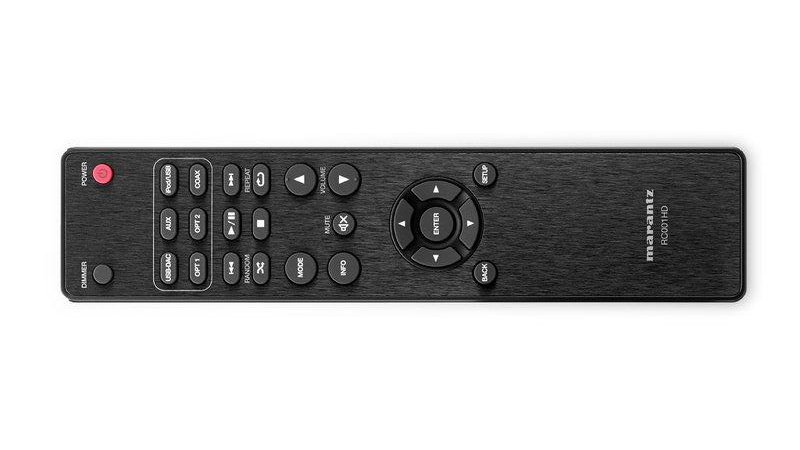
The DAC functionality is based around a Cirrus Logic CS4398 DAC chip. This is a 24-bit device with sampling rate support to 192kHz. It has dedicated DSD inputs and can apply a 50kHz filter to ADD inputs to conform to Scarlet Book specifications (that is, the specs for SACDs), or bypass it. The PCM decoder uses multibit oversampling techniques.
This particular Cirrus Logic chip includes digital volume control with 0.5dB steps, but as we’ll see, it seems that Marantz has not implemented that. The chip also includes several top-end roll-off treatments, but these aren’t accessible to the user either.
The analogue amplifier uses current feedback amplification and Marantz HDAM-SA2 modules. Marantz only specifies the output power for 32 ohm loads – 800mW – and notes that it “can drive audiophile high-impedance headphones up to 600 ohms”.
If we were looking for an Achilles Heel (or two) with regard to the Marantz HD-DAC1, it would be that it does not support super-high resolution formats (352.8/384kHz and DSD512 and beyond), and that it does not have a balanced headphone output. Neither of these would be a deal-breaker for us, because close to 99 per cent of the music we own is not in a super-high resolution format and we don’t possess a pair of balanced headphones.
Installation
After a brief check of the optical and coaxial digital inputs, we used the unit primarily as a DAC for a computer. The Marantz HD-DAC1 is a fairly narrow unit – it’s only 250mm wide – so placement should not present difficulties. It’s a surprisingly heavy five kilograms in weight. But if you are using it with a computer, ensure you use a high quality USB cable of not more than five metres in length.
Since the unit conforms to USB Audio Class 2.0 specifications, you’ll need to download the drivers for Windows. Yes, current versions of Windows 10 natively support USB Audio Class 2.0, but generally only through Windows’ own Direct Sound management system. In order to stream DSD effectively to a DAC you need to use an ASIO or WASAPI interface. The Marantz drivers make those available.That stuff isn’t needed for Macs.
Installation went smoothly and the Marantz unit was provided readily as a sound output to my player software – JRiver Media Centre on Windows. The setup on JRiver Media Centre setup was easy. You just choose “Marantz ASIO Device” (or the WASAPI and the Kernel Streaming ones work just as well) and set Bitstreaming to “DSD”. And that’s it.
One thing we found interesting was that there was a physical relay click inside the unit whenever it switched from PCM to DSD playback or vice versa, which suggests that Marantz does employ the separate DSD inputs on the CS4398 chip.
You can play music back direct from USB devices so long as they use basic FAT16 or FAT32 formatting and do not contain more than 700 folders, which meant that our standard test SSD, which has more than a thousand folders on it, wouldn’t work. Smaller flash drives with fewer folders worked fine though.
Do note however, that this USB support really is something of an extra, and it supports only basic digital audio decoders. It can play WAV files – no conversion necessary – MP3, WMA and AAC. And that’s it. No FLAC. No Apple Lossless. Play those from your computer.
Remember that your computer will decode things codecs such as FLAC and ALAC and MP3 to PCM. It’s the PCM which the computer feeds to the DAC.
If you do go the USB way, you use the remote control to navigate through the folder structure on the device and play the listed files. There’s no access to their internal ID3 tags.
The volume control was clearly analogue. We tried to determine volume level steps– it’s easy enough with the 0.5dB steps built into the DAC chip. But there were no steps. If you use the remote control to adjust the volume, a small motor adjusts the volume potentiometer.
The ‘Amp Gain’ setting offers three steps. The main use is to set the unit up so that the volume range is appropriate for the sensitivity of your headphones. Do you like to be able to use most of the available scale or do you like to do all your adjustment in the bottom left quarter? You can choose. We left it on ‘Mid’ for all our tests.
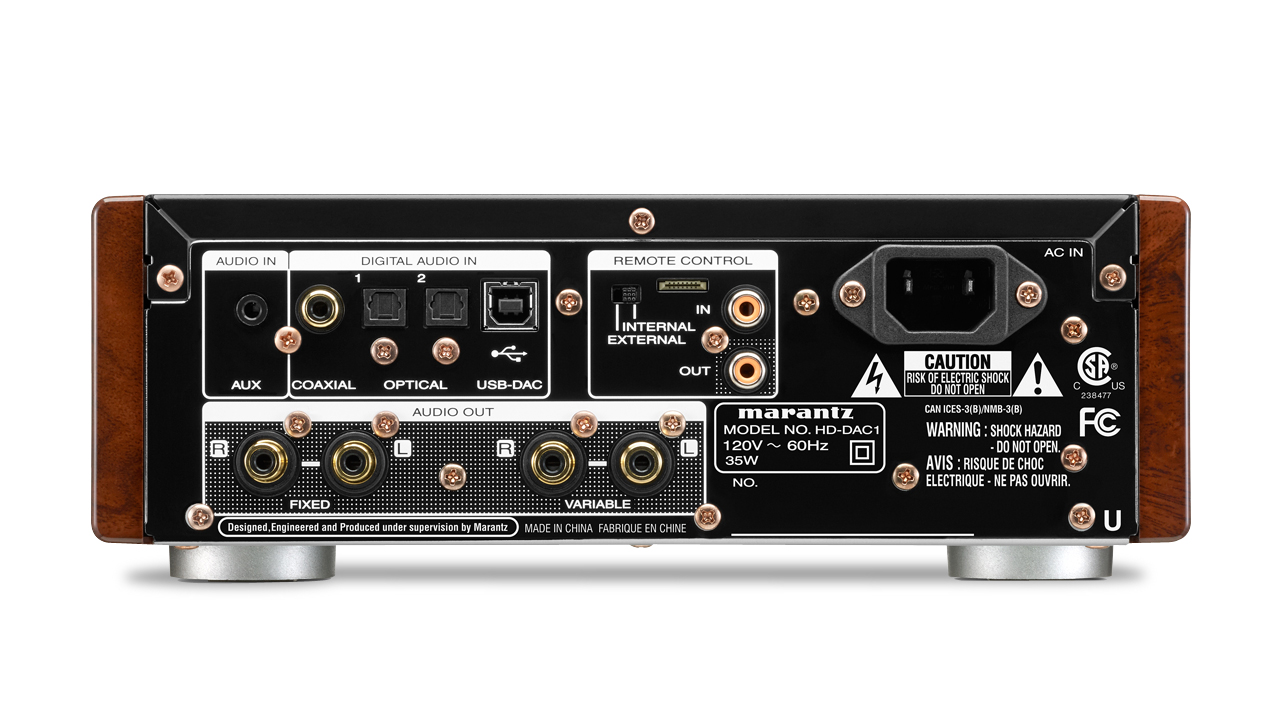
Listening sessions
We had the Marantz HD-DAC1 on our desk for several weeks, and what a pleasure it was. Much of the time it was an accompaniment to our work, whether it was driving headphones or a desktop audio system (based around KEF LS50 speakers and a Krix Seismix 1 subwoofer). But a lot of the time we were listening critically.
When listening we used a wide range of headphones: Focal Elear, Beyerdynamic Amiron Home, Oppo PM3 closed back planar magnetic, Audeze LCD-1, an old pair of Sennheiser HD 535 open back ‘phones and Final Audio B3 two-way balanced armature IEMs.This range of headphones revealed one thing above all else about the Marantz HD-DAC1, which is that it had power and drive in abundance for any and all these headphones.
They all sounded natural, too, suggesting a low output impedance on the headphone amplifier. We did measure the output power and, as we’ll discover later, it was abundant.
The essential nature of the sound was transparent. Amplifier transparency demands control, especially in the bass regions to make the headphone drivers respond accurately to the signal.
We listened to some Janis Joplin – ‘I Got Dem Ol’ Kozmic Blues Again Mama!’ with the Beyerdynamic headphones. Track 2, Maybe was wonderfully open and detailed. And powerful. These are 250 ohm headphones. With the gain control at ‘Mid’, we achieved a comfortably loud listening level with the volume control set at 11 o’clock.
The drum kit, mostly to the right, was delivered with majestic authority and utter clarity. As indeed was everything else in the track, including Joplin’s voice, the brass and the saxophones. We were aware of some 26Hz noise that had made its way onto this track, but we’d been previously unaware of some other bass hash which was kind of pulsating at times through the next track, One Good Man.
In the opening of Kozmic Blues the cymbals sounded like they were out there in the room in front of us, rather than being pumped into our ears by the headphones.
The Beyerdynamic headphones are fairly bright, but not as bright as the Final B3 in-ears. Yet they were somehow an easier listen than usual. We doubt that the amplifier could have done that. Perhaps they are wearing in. Anyway, they have a similar sensitivity – 102dB/mW – to the Beyerdynamic headphones, but they are nominally 19 ohms rather than 250 ohms. No problems. Superb control from the Marantz and, of course, even more power on tap I’m certain, were we prepared to chance it.
We spent most of the time with the Focal Elear headphones. These have a tonal balance closer to what you experience with high-quality loudspeakers. They are also middling in impedance – 80 ohms. Throughout all manner of music from piano to vocals to hard, hard rock, the Marantz delivered perfect control, providing a clear window into the recording.
It’s only those few audiophiles that are experimenting with super-high resolution formats (352.8/384kHz and DSD512 and beyond), or those who use balanced headphones, who may be disappointed that they can’t use these formats or devices.
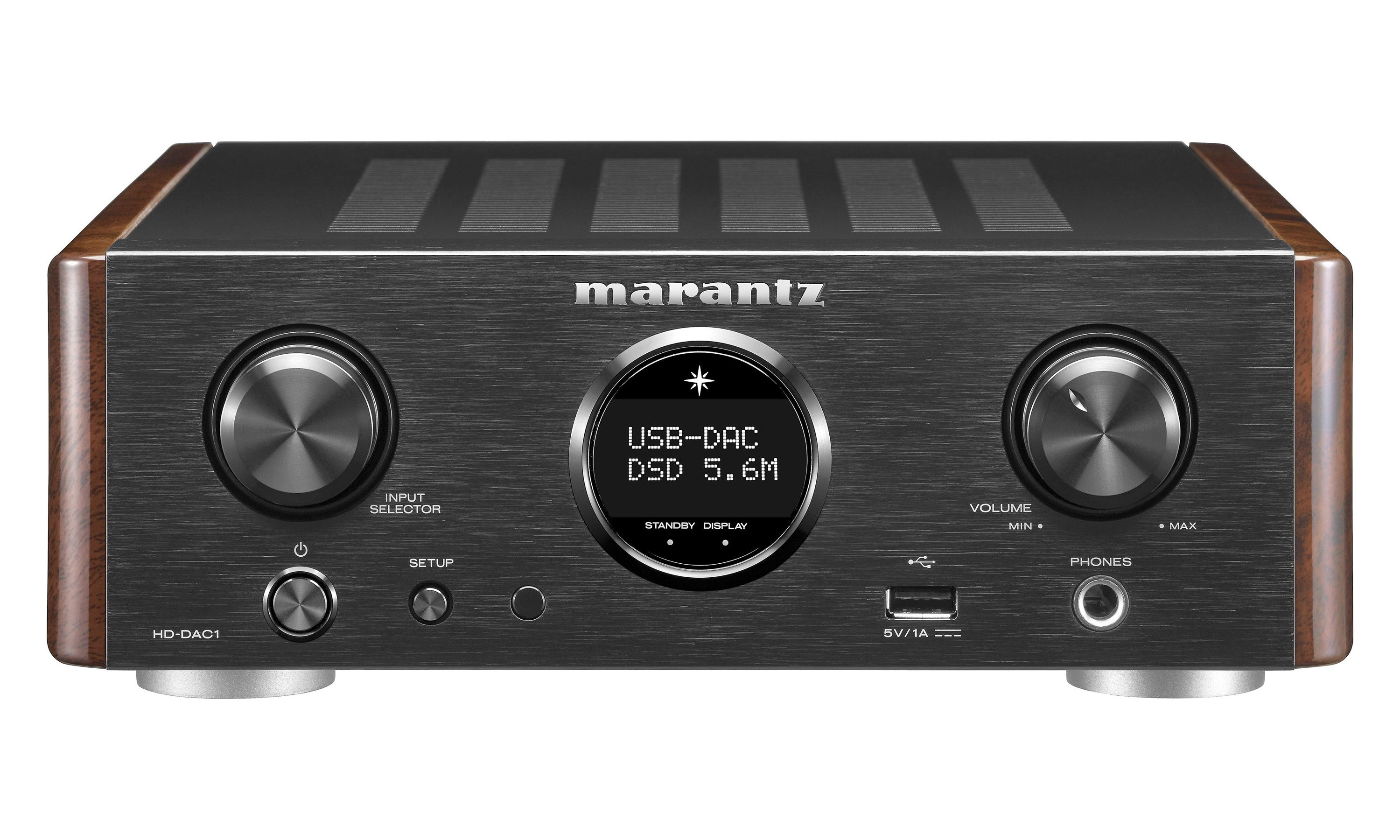
Lab results
We check output levels by using an oscilloscope and adjusting the level until just before clipping. With most DAC/headphone amplifiers, this is a fairly precise process because the level is usually adjusted in steps – say 0.5dB per step. But this one appeared close as dammit to being continuously variable.
Furthermore, clipping was soft at least in the early stages, so we were trying to judge slightly flattened tops of waveforms, which is especially tricky with a digital scope. So expect a little less accuracy in these measurements than usual. Not that it matters, given the output performance of the headphone amplifier.
Into a test 16 ohm load, the unit managed to deliver at least 830mW unclipped, or a touch better than specification. That translates to some 29dB above the sensitivity rating of the headphones. For the Final Audio B3 IEMs, for example, that would come to around 131dB. More than enough we should have thought.
Note that this was without the volume control advanced to anywhere near the maximum. Low-level material can be wound up a long way.Even into a 300-ohm test load, the unit managed better than 250mW. That’s sensitivity +24dB. The line output measured at 2.4 volts RMS. The variable line output matched that when volume was at maximum.
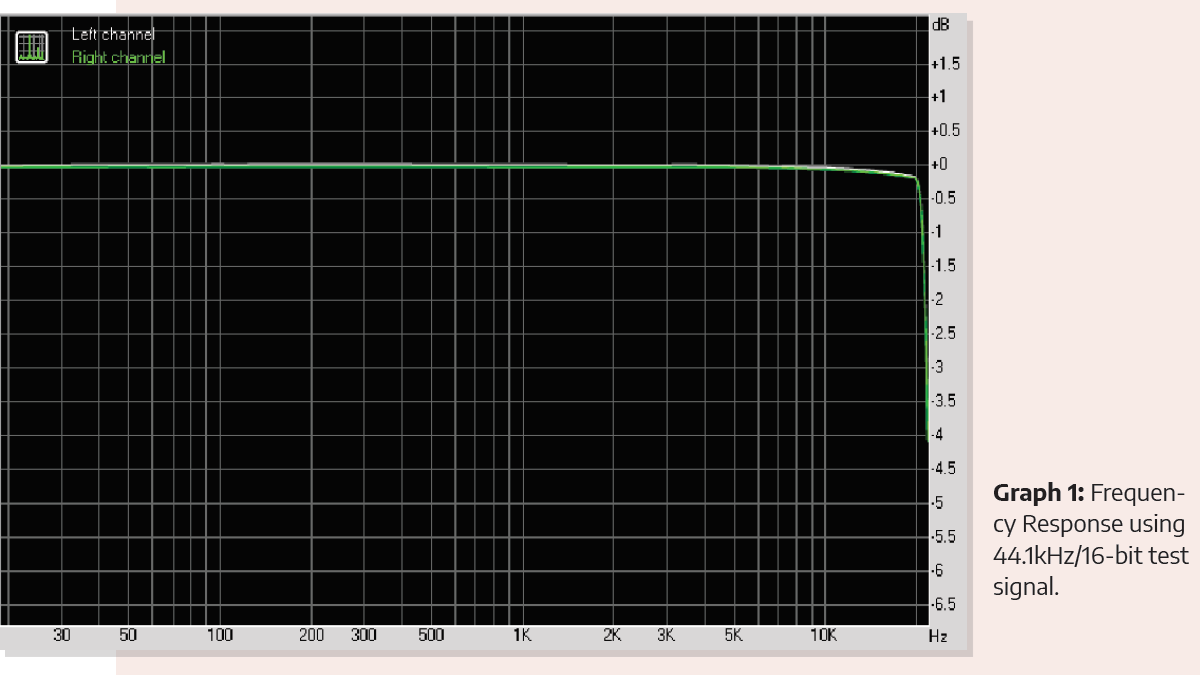
Marantz has clearly chosen the faster, sharper filter setting in the DAC chip. As you can see in Graph 1, above, with 44.1kHz, 16-bit sampled material, the high-frequency roll-off, such as it was, commenced at perhaps 8kHz, but even by 20kHz the output was down by only 0.15dB. The cutoff was sharp beyond that.
Noise was at -97.7dBA while THD was less than 0.001% and IMD plus noise was less than 0.004%. Those are, essentially, perfect measurements.
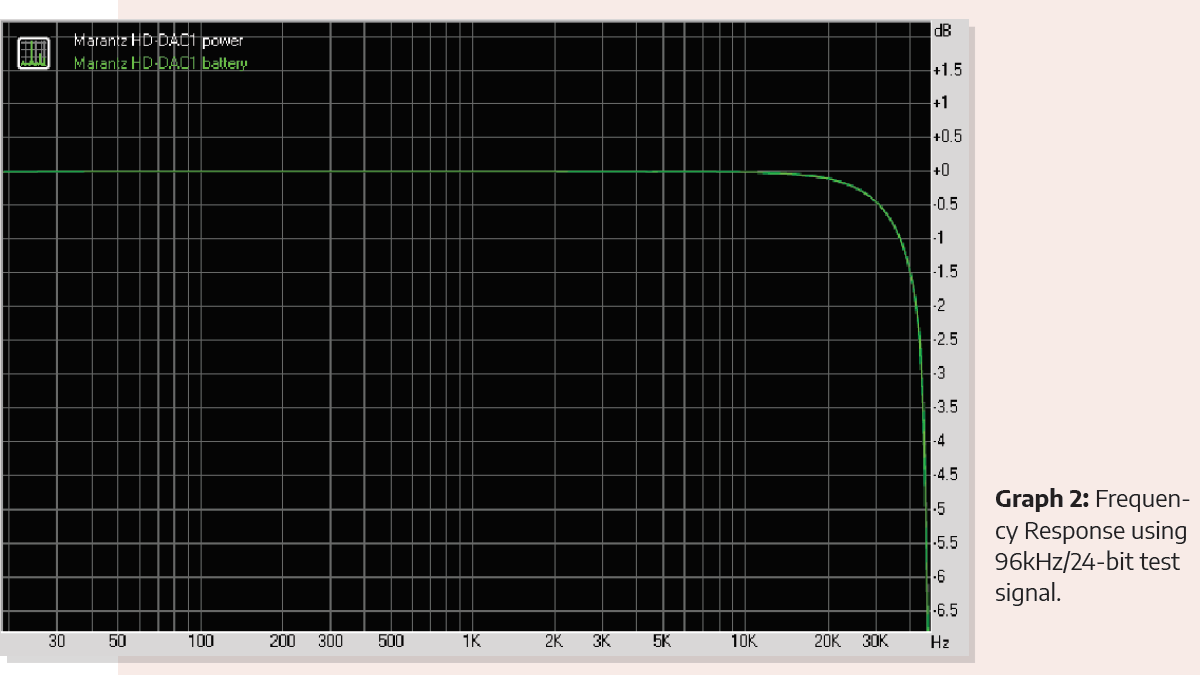
The graph above shows the Marantz HD-DAC1’s frequency response with 24-bits and 96kHz sampling, the high-frequency response continues the curve from 44.1kHz to be down by nearly 0.5dB at 30kHz and at -1.5dB at 40kHz.
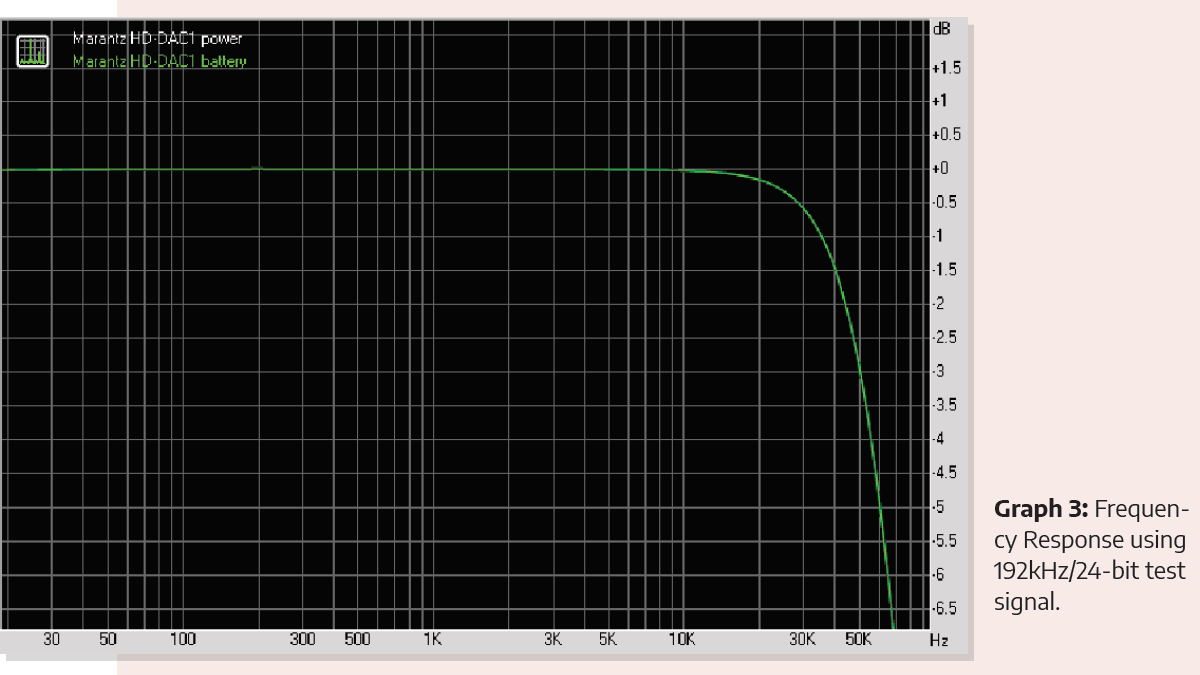
With 192kHz sampling, as shown in Graph 3, above, the frequency response was the same as it was at 96kHz, except continuing on to be down by 3dB at 50kHz and 5dB at 60kHz.
Up to this point we had been using a Surface Pro 6 to feed the signal to the Marantz, so we compared things with the Surface Pro running off power to running off its battery to see what effect this might have on noise performance. Marantz says that it uses “extended isolation around the USB-B input to eliminate the chance of a high frequency noise being generated by the computer when entering the HD-DAC1.”

As you can see from the graph above, in both states the unit measured identically: an impressive -113.1dBA. The graph shows some mains noise and harmonics thereof, with the worst not quite reaching -120dB. Since it couldn’t have come from the Surface Pro when running off the battery, this must be internal from the unit’s own power supply. But it’s so low in level that you will never – ever – hear it.
We’d just like to dwell on that 24-bit noise performance for a moment. Many DACs seem to let noise received over the USB connection into their analogue audio output. The Marantz HD-DAC1 shows that with sensible design this need not be the case.
Final verdict
The Marantz HD-DAC1 sounds great, is very practical and would be the perfect DAC and headphone amplifier for the great majority of music lovers who listen to music using standard digital formats and with ordinary conventional headphones.
Australian Hi-Fi is one of What Hi-Fi?’s sister titles from Down Under and Australia’s longest-running and most successful hi-fi magazines, having been in continuous publication since 1969. Now edited by What Hi-Fi?'s Becky Roberts, every issue is packed with authoritative reviews of hi-fi equipment ranging from portables to state-of-the-art audiophile systems (and everything in between), information on new product launches, and ‘how-to’ articles to help you get the best quality sound for your home. Click here for more information about Australian Hi-Fi, including links to buy individual digital editions and details on how best to subscribe.
-
nopiano Reply
Judging by the number of queries on Facebook groups and some other forums I’d say yes. I think everyone imagines their five years old CD player will sound way better with a new DAC, but then when it’s too bright they sell the DAC and try again!manicm said:Does anyone buy a standalone dac anymore? -
Hawkmoon Reply
Why wouldn't you? If you buy an amp with a DAC then you lose your DAC as well if your amp fails and typically DACs in amps are not as good as standalone DACs. Similarly, if you buy a streamer with a built-in DAC then these tend not to have great DACs built in unless the streamer is £1000s. Surely buying a separate DAC just keeps to the age-old hi-fi separates philosophy? I can see the attraction of very high end one box solutions from the liks of dcs etc but for more moderately priced kit it still seems prudent to consider keeping amp, streamer, CD transport and DAC separate. Not only does that provide some protection against failing equipment it also allows easier upgrading in the future. Just my take.manicm said:Does anyone buy a standalone dac anymore? -
manicm ReplyHawkmoon said:Why wouldn't you? If you buy an amp with a DAC then you lose your DAC as well if your amp fails and typically DACs in amps are not as good as standalone DACs. Similarly, if you buy a streamer with a built-in DAC then these tend not to have great DACs built in unless the streamer is £1000s. Surely buying a separate DAC just keeps to the age-old hi-fi separates philosophy? I can see the attraction of very high end one box solutions from the liks of dcs etc but for more moderately priced kit it still seems prudent to consider keeping amp, streamer, CD transport and DAC separate. Not only does that provide some protection against failing equipment it also allows easier upgrading in the future. Just my take.
Yes dacs in amps may not be the best, but I was thinking more streamers. I would argue streamers at >= 500 quid will have excellent DACs. When you mention DCS you're talking very high level.
So I still don't see much value in a standalone DAC anymore. -
Hawkmoon Reply
Depends. For example I have a Node 2i streamer. Recently upgraded my DAC to a £880 Mytek Liberty (similar to the Mytek Brooklyn) - it sounds phenomenal with the 2i and is a noticeable improvement on the internal DAC in the 2i. Also allows me to use my CXC CD transport with it. What's not to like?manicm said:Yes dacs in amps may not be the best, but I was thinking more streamers. I would argue streamers at >= 500 quid will have excellent DACs. When you mention DCS you're talking very high level.
So I still don't see much value in a standalone DAC anymore. -
fazalmajid Replymanicm said:Does anyone buy a standalone dac anymore?
I have 5:
A Benchmark DAC3 DX for the living room system (paired with a Benchmark AHB2 power amp, with a Roon Nucleus as the source and B&W 804S speakers)
A Questyle CMA400i at my home office, connected to my Mac, with AKG K550 closed-back headphones
A Fostex HP-A8 connected to a Rock64 (sort of like a RaspberryPi) running Roon streaming software, and Focal Elear headphones
A Fiio K3 connected to a Raspberry Pi 4B+ 4GB and a B&W Zeppelin for my daughter's bedroom.
An Oppo HA2-SE for use during travel (remember travel?)If you do most of your listening on headphones, a DAC combined with headphone amp like the Marantz is near ideal.
In theory, a combined streamer/DAC/amp unit would be even better, but hifi companies are not software powerhouses, and an inexpensive RPi based streamer (around £50 for a RPi 4B with 4GB and Ropieee, Volumio or one of the other dedicated streaming Linux distributions) will work as well as a proprietary system, and is future-proof.
If there is one reservation I have with this Marantz, it's that it's still using the CS4398 they've been using in various incarnations for over a decade (e.g. my SA8260 SACD player circa 2005). There has been progress since, it's time they upgraded their DAC and DSP game to the level of the competition, e.g. AKM or ESS DACs.
Oh, someone mentioned CD players. I would venture the vast majority of DACs today are not used in combination with a CD transport but with a computer or streamer. As far as I am concerned, it's 2020, and CD transports belong on the dustheap of history with vinyl and SACD, but of course to each his own. -
manicm There are many all in one streamers/amps/DACs on the market, the obvious ones being Marantz.Reply
I suppose if I were to go as high end as you in the living room, I perhaps would have got a standalone DAC, but on second thoughts no - I appreciate what Roon has done, but I don’t believe it leaves ultimate sound quality untouched. Which brings me on to why and your opinion on CDs...
Roon may offer album art, and info etc. but while you say there’s no room in the 21st century for CD players, I will argue doubly so for the turntable. I do miss the ritual and the large artwork, but it’s like the short-lived charm of living with a classic car - for some yes, for me thanks but no thanks.
I too rip my CDs to listen through USB in the living room, and on my PC when working. But I still love buying CDs for the artwork and album info. And occasionally I still like spinning CDs because sometimes it has an inexplicable sparkle that rips sometimes lack.
So horses for courses really, -
fazalmajid Replymanicm said:There are many all in one streamers/amps/DACs on the market, the obvious ones being Marantz.
IIRC Marantz was fairly late to the game of compact DACs with headphone amps, compared to, say, Cambridge Audio.
Roon may offer album art, and info etc. but while you say there’s no room in the 21st century for CD players, I will argue doubly so for the turntable.
I heartily agree. I am old enough to have witnessed the introduction of CDs, some of my CDs date from 1984 and I do not miss vinyl one bit.
I still like spinning CDs because sometimes it has an inexplicable sparkle that rips sometimes lack.
Are you using a precision ripper with C2 error channel support like ExactAudioCopy (EAC) on Windows? That makes a huge difference with old discs that are starting to pit. Unfortunately, I only discovered that about halfway through ripping my CD collection so I would need to go back and redo about 300. Fortunately I have been fairly disciplined about recording the provenance and ripping tools used for my files, so I know which 300. -
fazalmajid Replylondonguy said:"capable dac on a budget" yet i cant see anywhere on the review the actual price
It's £705. Whether that qualifies as "budget" is debatable, or even value for money with technology this old.
